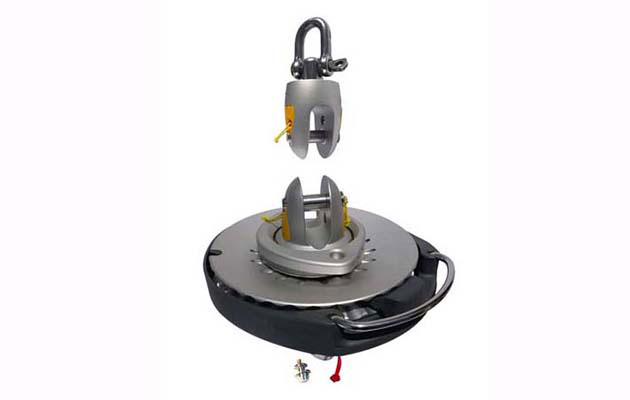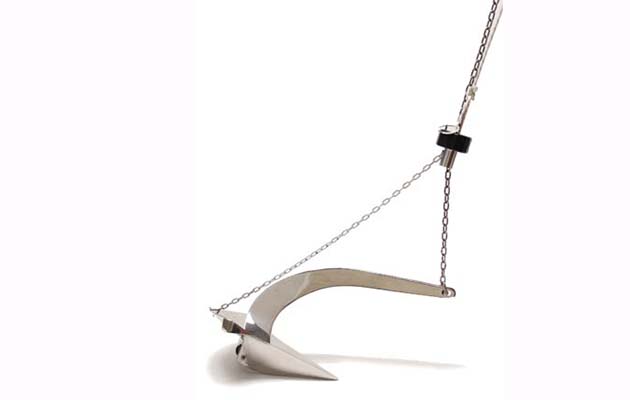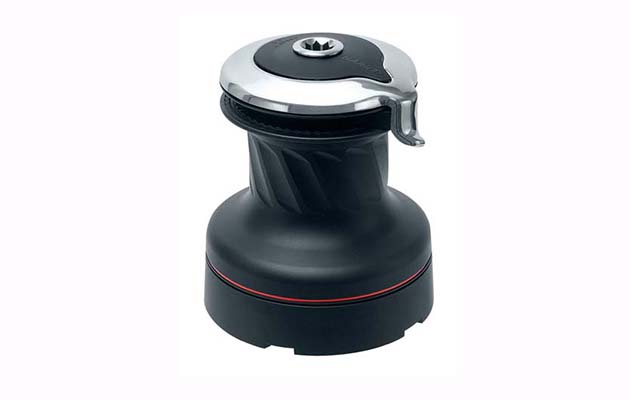We asked a range of active bluewater cruisers to recommend their recent top deck gear purchases – the results range from top down furlers to anchors to inflatable cockpit lights.
Yachting World readers can be found all over the globe, some chilling out in the Med and the Caribbean, others pushing their boats and themselves to the limit in high latitudes exploration or among seldom visited Pacific outposts. We regularly reach out for views and opinions on items of gear and equipment – here’s the latest collation of bluewater cruisers’ top deck gear recommendations.

Erik Lindgren, Baltic 56 Spirit V – The Lindgrens have cruised and raced their Baltic before doing four Atlantic crossings. Having sailed with the World ARC to Australia, they left Spirit in Brisbane and are now back in Sweden.
Antal Hook
“The Antal Hook is a simple, light and inexpensive movable block. The model we use is called HK16 and replaces a normal (and much more expensive) snatch block in various situations. We use it mainly for the preventer, barber-hauler, jib-inhauler and when mooring (to avoid chafe).”

Price €89.30 (ex vat) www.antal.it
Stern anchor arm
“Our custom-made anchor arm for a stern anchor has been invaluable in the Pacific. It was fantastic when anchoring in the Galapagos, Marquesas and all the other areas where you require a stern anchor to keep the bow into the in-coming swell, or when there is no room for boats to swing. The arm gives us the possibility to have a good-sized stern anchor with 20m of chain plus rope.

Stern anchor arm aboard Spirit.
“Almost all other boats in the World ARC had issues with stern anchors that were too small and/or had no chain. A few anchors were lost due to lack of chain and ropes chafing on coral. We slept better than most others!”

Paul and Caroline Frew, Oyster 575 Juno – The Frews have logged over 45,000 miles in Juno since buying her in 2011, including sailing across the Pacific to Australia with the World ARC and cruising the Med in summer 2016.
Karver top down furler
“The best recent addition to our deck gear has been the top-down furler for our cruising chute,” said Paul Frew. “Previously this huge sail just sat in the lazarette and was never used because of difficulties with the snuffer.

“With the top-down furler we use the kite all the time in winds up to 20 knots true. If we see a squall or the wind picks up we can easily furl it using one of the genoa winches.
“We use a Karver KSF5 with a Navtec torsion cable. I also have a removable carbon bowsprit made by Formula.
“It’s worth bearing in mind that the loads on the tack are considerable. Originally I had a fixed D-ring on the end of the prodder for the furler to attach to, but the bolts sheared when we were reaching mid-Atlantic in about 15 knots apparent.
“I have since replaced the D-ring with a 2:1 tack line that is dead-ended on the end of the prodder and runs through a large Lewmar block and back to a cleat on the foredeck.

“The furler is attached to the block and this allows the tack to articulate in every direction and since then I have had no problems.
“Once the sail is hoisted on a spinnaker halyard I can unfurl it by hand with no problems. To furl I use the primary electric winch.
“I tend to wrap the sheet around the sail a few times and then drop it back on deck and bag it later. It’s so much easier than a snuffer and I am sure that in time, all asymmetrics will have this type of arrangement.
“This set-up means that Caroline and I can set the kite with just the two of us – and more importantly we can furl it in a hurry with no drama!”
£3,035 for the furler and halyard swivel. www.karver-systems.com / www.formulamasts.co.uk

John and Stella Dyer, First 47.7 Exocet Strike – The Dyers (front row) ran Exocet Strike as a skippered charter yacht out of Plymouth before equipping her for long-term passagemaking and sailing to New Zealand with the World ARC.
OC Tender 300
“The most recent purchase we can recommend is this foam sandwich dinghy. It planes easily with an 8hp outboard, has much more space than a RIB and provides a much drier ride.”

The Dyers’ OC Tender 300 is 3.04m (9ft 11in) in length and weighs just 42kg. The wide, chined shape with plumb bow provides a stable yet light platform, one that should plane easily.
OC Tenders manufactures its boats in the Bay of Islands, New Zealand.
“It’s the first cruising ground for the vast majority of yachts entering NZ waters, hence our tenders being so popular with international cruisers,” say OC’s founders Karin & Russell Carlyon.
“Our current range of tenders is custom built from West System epoxy foam sandwich with carbon reinforcement in high stress areas. We use a full closed cell foam rub rail, providing full flotation and protection for the main boat as well as the tender.”
NZ$5,950 ex VAT. www.octenders.com

John and Christine Lytle, Bowman 40 Oriole – The Lytles sail a 20-year-old Bowman, which has been based in the eastern Caribbean for the last 14 years. They have recently returned with the yacht to the UK.
Rocna anchor
“Our experience with the Rocna is confined to the Caribbean where there is no Scottish kelp, but it sets in a very short distance and if it does not set you can be confident it has got foul of something like a tyre or a lobster pot.

It is said that, apart from the day you buy your first yacht and the day you sell your last one, the third best day in a yachtsman’s life is the day he throws away his CQR and buys a Rocna.
We have complete faith in this anchor and it digs right in, which a CQR rarely does, usually just lying on its side.”
A 20kg Rocna costs £467. www.rocna.com

Stuart and Anne Letton, Island Packet 45 Time Bandit – After early retirement in 2011, the Lettons crossed the Atlantic four times, cruised to the Lofotens and are currently enjoying a circumnavigation, including the Vava’u Blue Water Festival in Tonga.
Scanmar Anchor Rescue
“I’ve had my anchor caught a few times. In anchorages where there are a lot of moorings around, or if it’s too deep to dive, I really like having a trip line, despite the potential problems it can create with people running over it.”

The Anchor Rescue works by using a slider and tether system on the anchor. When the anchor becomes fouled, a retriever is attached to the anchor rode and lowered to connect to the slider.
The anchor rode is then slackened and as the retriever/slider pair moves up the anchor rode, the tether lifts the crown of the anchor.
The complete system costs $229. www.anchorrescue.com
Bimini rain catcher
“Does an improvised shade-cum-rain-catcher count as top deck gear?” asked Stuart Letton.

“In the absence of a watermaker, and to avoid humping jerrycans, I bought a 3m x 5m piece of Sunbrella fabric with a funnel built into it. This has eased our water collection problems, plus it gives us some shade.
During a day of rain last week we put 500 litres into the tank! We use a combination of the rain catcher and a sandbag to divert water into our deck filler hole.”
Luci inflatable light
“Our Luci inflatable foredeck light can be set to one of eight colours or there is a disco mode in which it changes colours. It’s ideal for finding one’s boat in the dark among dozens or hundreds of other anchor lights.”

As per the other Luci models, the Colour version is waterproof and inflatable. It measures just 2.5cm when collapsed and charges in seven hours. £19.95 www.thesolarlightcompany.co.uk

David and Sally Batten, Stimson 56, Alcedo of Ryme – The Battens come from a family steeped in cruising history. After sailing with the last World ARC, the Battens have left their yacht in New Zealand and are currently back in the UK.
Deck padeye
“Our most recent purchase was a pair of deck padeyes and we have installed them to provide another sheet turning position for use with twin running headsails. We have used both Harken and Gibb fittings and both seem fine.

The extra padeyes were specifically for the long crossings where we expected to be goose-winged or have the twin running sails set. In practice we carried that rig all the way across the Pacific and it all worked very well.
In summary you can never have too many padeyes!”

Bones and Anna Black, Bowman 57, Emily Morgan – The Blacks live aboard and occasionally run charters on their 1982 Bowman, sailing in the UK in summer and in the Caribbean or further afield during winter
Harken Radial winch
“Our latest deck equipment is a new Harken Radial self-tailing two speed mainsheet winch. It is so easy to trim and free.”
The Radial models have distinct ribs that run diagonally on the drum to maximise grip and minimise wear on the rope. The 4.0 Radial model costs £949.33. www.harken.com





